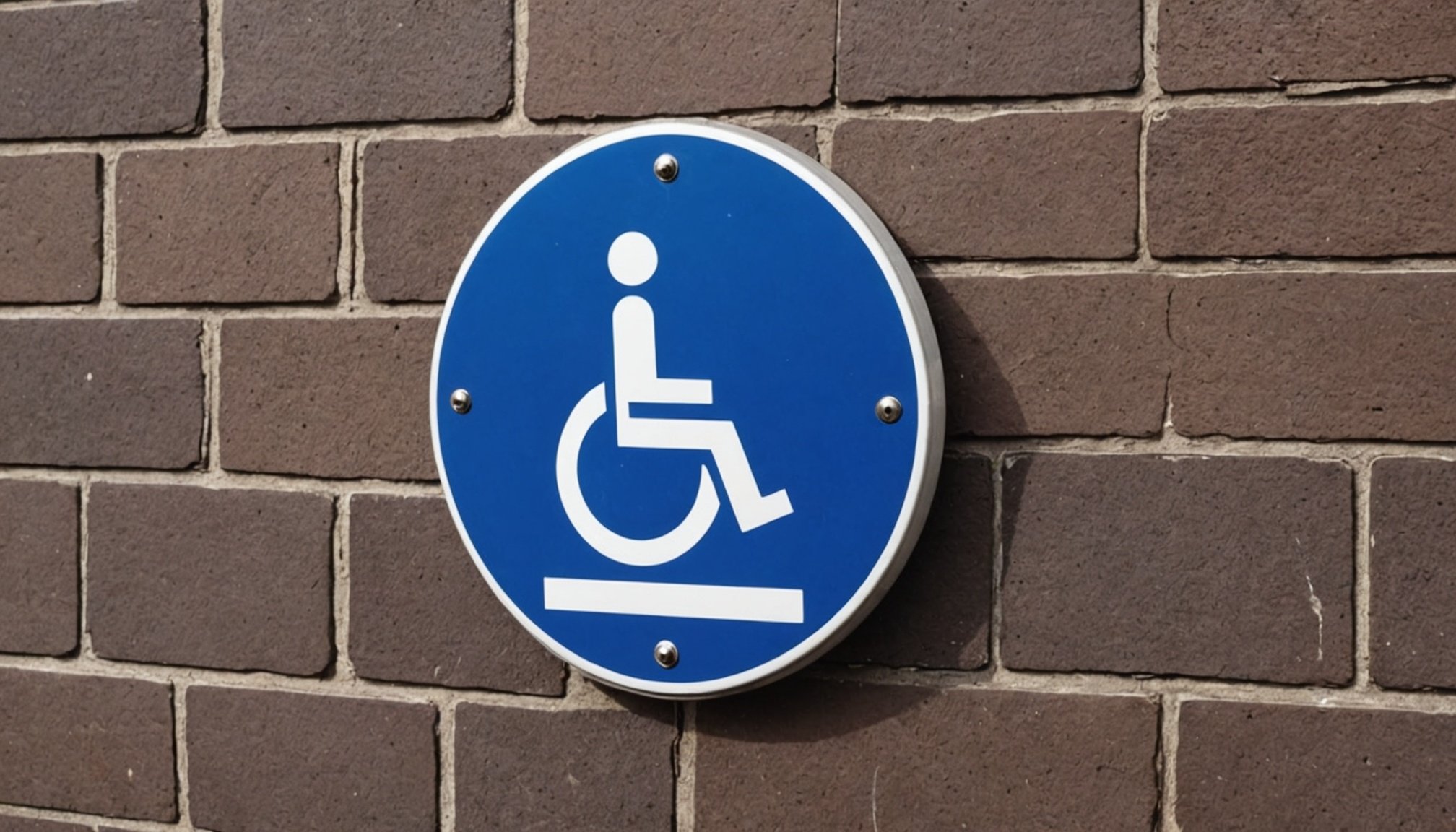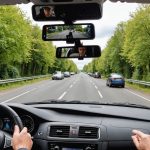Your Ultimate Resource for Obtaining a Blue Badge for Disabled Parking in the UK
Understanding the Blue Badge Scheme
The Blue Badge scheme is a national initiative in the UK designed to help people with disabilities or health conditions to park closer to their destinations, whether they are driving or being driven. This scheme is open to both individuals and organisations, and it provides significant parking concessions that can greatly improve the mobility and independence of disabled individuals.
Who Can Apply for a Blue Badge?
To qualify for a Blue Badge, you must meet specific eligibility criteria. Here are some of the key groups that automatically qualify:
In the same genre : Top strategies to ensure your car aces the uk’s biannual safety check
- Registered Blind: If you are registered as blind, you are automatically eligible for a Blue Badge[1][3][4].
- War Pension Mobility Supplement: Recipients of this supplement qualify for a Blue Badge[1][3][4].
- Higher Rate of Mobility Component of Disability Living Allowance (DLA): Those receiving the higher rate of the mobility component of DLA are eligible[1][3][4].
- Personal Independence Payment (PIP) Mobility Component: If you score 8 points or more under the “moving around” activity of the mobility component of PIP, you qualify. Additionally, if you score 10 points for descriptor E in your PIP for “planning and following a journey” and cannot undertake any journey due to overwhelming psychological distress, you are also eligible[1][3][4].
- Armed Forces Compensation Scheme: Recipients of a lump sum from the Armed Forces Compensation Scheme at tariff 1-8 and assessed as unable or virtually unable to walk qualify for a Blue Badge[1][3][4].
You may also qualify if you have an enduring and substantial disability that prevents you from walking or makes walking very difficult, or if you experience considerable difficulty while walking, including psychological distress. Children under 3 can qualify if they must always be accompanied by bulky medical equipment or need to be kept near a vehicle for medical treatment[1][3][4].
Applying for a Blue Badge
Applying for a Blue Badge involves several steps and requires specific documentation.
Have you seen this : Everything You Need to Know About the 2023 UK Child Booster Seat Regulations
Required Documents
To apply for a Blue Badge, you will need to provide the following documents:
- National Insurance Number: This is a mandatory piece of information[1][3][4].
- Passport Photo: A recent digital photo showing your head and shoulders[1][3][4].
- Proof of Identity: This can include a birth certificate, passport, or driving licence[3][4].
- Proof of Address: Such as a council tax bill or government letter[3][4].
- Details of Current Blue Badge: If you are renewing your badge[1][3][4].
- Medical or Other Evidence: Supporting your reason for application, such as DWP PIP award letters, DLA award letters, or certificates of visual impairment[1][3][4].
Here is a detailed list of the specific evidence required for different conditions:
- Terminal Illness: SR1 form
- PIP Mobility: DWP PIP award letter dated within the last 12 months
- PIP Mobility (Planning and Following Journeys): DWP PIP award letter dated within the last 12 months
- Disability Living Allowance (Higher Rate for Mobility): DWP DLA award letter dated within the last 12 months
- Blind or Severely Sight Impaired: Certificate of visual impairment
- War Pensioners Mobility Supplement: WPMS letter from Veterans UK dated within the last 12 months
- Armed Forces Compensation Scheme: AFCS letter from Veterans UK confirming tariffs 1 to 8 and a certificate confirming disability from Veterans UK[3].
The Application Process
The application process can be completed online, and it is recommended to start at least two months before your current badge is due to expire to avoid any disruptions.
- Online Application: Use the online form available on the GOV.UK website or your local council’s website. You can save your progress and return to the form later if needed[1][3][4].
- Submission of Documents: Upload or send the required documents. Ensure all documents are clear and legible[3][4].
- Assessment: Your application will be assessed based on the provided information. If additional information is needed, you will be contacted[1][3][4].
- Processing Time: Applications can take up to 12 weeks to process once all documents are received. Incomplete applications may extend this period[1][3][4].
Using Your Blue Badge
Once you have been issued a Blue Badge, it is crucial to understand the rules and responsibilities associated with its use.
Displaying Your Blue Badge
- Correct Display: Your Blue Badge must be displayed on the dashboard of the vehicle with the front face showing. Ensure the badge is not obscured by any other items[1].
- Authorized Use: The badge is for your use and benefit only. It must only be displayed when you are travelling in the vehicle as a driver or passenger, or if someone is collecting you or dropping you off close to where you need to go[1].
Parking Concessions
Blue Badge holders enjoy several parking concessions:
- On-Street Parking: Park without charge or time limit in otherwise restricted on-street parking environments[4].
- Yellow Lines: Park on yellow lines for up to three hours, unless a loading ban is in place[4].
Here is a summary of the key parking concessions:
| Parking Location | Concession |
|---|---|
| On-Street Parking | No charge or time limit |
| Yellow Lines | Up to 3 hours, unless loading ban |
| Restricted Areas | Access to areas otherwise restricted |
Rights and Responsibilities
- Do Not Allow Misuse: Do not allow other people to use the Blue Badge for their benefit, such as shopping or collecting items for you. This could prevent another badge holder from parking near their destination[1].
- Inform Drivers: If someone else is driving you, ensure they understand the rules and regulations surrounding the use of the Blue Badge[1].
Reporting Changes and Issues
It is important to keep your local authority informed of any changes or issues related to your Blue Badge.
Reporting a Change
If your address, name, or entitlement have changed, you need to notify your local council. This can usually be done via email or through the council’s website[1].
Reporting a Lost or Stolen Blue Badge
If your Blue Badge is lost, stolen, or damaged, you can request a replacement. For a stolen badge, you will need a crime reference number. You can apply for a replacement online or through your local council[1][3].
Reviewing a Decision
If your application for a Blue Badge is declined, you have the right to request a review.
Providing Additional Information
To request a review, you must provide additional medical information that has not already been seen. This can include:
- Copies of occupational therapy or physiotherapy outcomes
- Hospital discharge summaries
- GP summary report or any medical information dated within the last 12-18 months that relates to your condition and how it impacts your mobility
You should also state why you feel the decision was incorrect and if there were any parts of your original application that you feel were not taken into consideration[1].
Applying as an Organisation
Organisations involved in the care and transport of disabled people can also apply for Blue Badges.
Eligibility for Organisations
To qualify, the organisation must provide care and transport for disabled individuals who would themselves be eligible for a Blue Badge. Here are the key requirements:
- Details of Care Provided: Explain the nature of care and how the badge will be used.
- Number of Disabled People: Provide the number of disabled people in the care of your organisation and those already in receipt of an individual Blue Badge.
- Vehicle Registration: Provide the vehicle registration number for each vehicle and proof that the vehicle is registered to your organisation (V5 or Lease Agreement)[4].
Practical Insights and Actionable Advice
Start Early
Begin your application process well in advance, especially if you are renewing your badge. This ensures you do not face any disruptions in your parking privileges[1][3][4].
Ensure Complete Applications
Make sure all required documents are submitted to avoid delays in the processing of your application. Incomplete applications can extend the processing time significantly[1][3][4].
Understand the Rules
Familiarize yourself with the rules and responsibilities associated with using a Blue Badge. Misuse can result in penalties and may prevent other badge holders from accessing necessary parking[1].
Seek Help When Needed
If you encounter any issues during the application or renewal process, do not hesitate to contact your local council’s Blue Badge team. They are there to assist you and ensure the process is as smooth as possible[4].
Obtaining a Blue Badge can significantly enhance the mobility and independence of individuals with disabilities. By understanding the eligibility criteria, the application process, and the rules surrounding its use, you can ensure that you make the most of this valuable scheme.
As a Blue Badge holder, you are part of a community that values accessibility and inclusivity. Here is what one Blue Badge holder had to say:
“The Blue Badge has been a game-changer for me. It allows me to park close to my destinations, which has greatly reduced the strain on my mobility. It’s a simple yet effective way to ensure that people with disabilities can live more independently.”
By following the guidelines and tips outlined in this article, you can navigate the application process with ease and start enjoying the benefits of your Blue Badge sooner.
Table: Key Documents Required for Blue Badge Application
| Document Type | Description |
|---|---|
| National Insurance Number | Mandatory piece of information |
| Passport Photo | Recent digital photo showing head and shoulders |
| Proof of Identity | Birth certificate, passport, or driving licence |
| Proof of Address | Council tax bill or government letter |
| Details of Current Blue Badge | If renewing your badge |
| Medical or Other Evidence | Supporting your reason for application (e.g., PIP award letters) |
| Terminal Illness | SR1 form |
| PIP Mobility | DWP PIP award letter dated within last 12 months |
| DLA Mobility | DWP DLA award letter dated within last 12 months |
| Blind or Severely Sight Impaired | Certificate of visual impairment |
| War Pensioners Mobility Supplement | WPMS letter from Veterans UK dated within last 12 months |
| Armed Forces Compensation Scheme | AFCS letter from Veterans UK confirming tariffs 1 to 8 and disability certificate |
List: Tips for a Smooth Blue Badge Application Process
- Start Early: Apply at least two months before your current badge expires.
- Ensure Complete Applications: Submit all required documents to avoid delays.
- Understand the Rules: Familiarize yourself with the rules and responsibilities of using a Blue Badge.
- Seek Help When Needed: Contact your local council’s Blue Badge team for assistance.
- Provide Detailed Information: Include detailed information about your condition and supporting documents to avoid unnecessary delays.
- Keep Your Information Updated: Notify your local council of any changes to your address, name, or entitlement.











